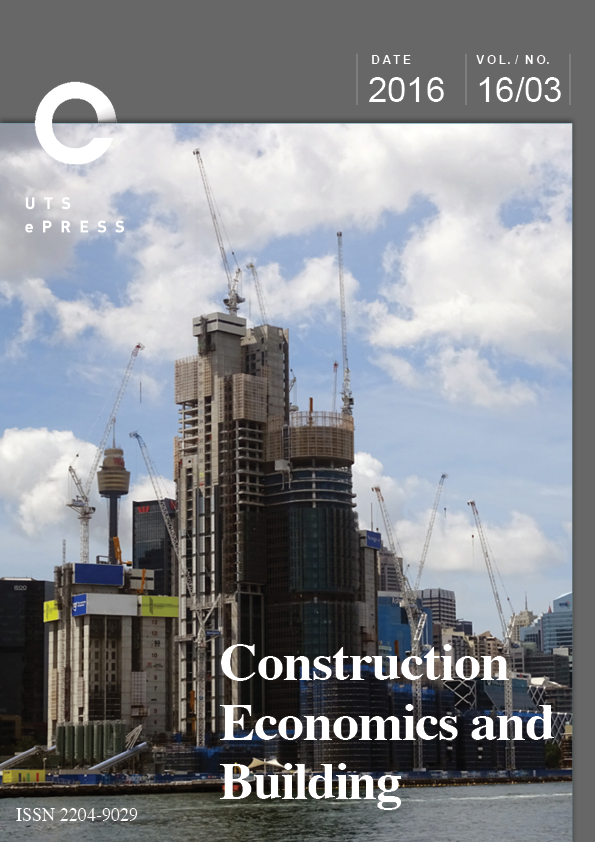Construction insolvency in Australia: reining in the beast
Main Article Content
Abstract
Insolvency has become endemic in the Australian construction industry. The scale of the problem has reached such proportions that both the NSW Parliament and the Senate have, in recent times, commissioned inquiries into construction insolvency. This paper aims to identify the reasons as to why the construction industry is so susceptible to insolvency, evaluate the effectiveness of any existing insolvency protection measures available to construction firms, and to identify proposed future measures to address the factors causing construction insolvency. The results of a questionnaire survey designed to discover the extent of the construction insolvency problem, as well as building contractors’ views with respect to the causes and regulation of construction insolvency, in South Australia are presented. The research found that there is an appetite amongst building contractors for the introduction of further regulation to address construction insolvency. Further, although the research found underbidding to be the biggest contributory factor towards construction insolvency, it appears to be the most difficult factor to address through regulation which explains the paucity of recommendations which directly address underbidding emanating from the Senate inquiry in 2015.
Article Details
Section
Authors who publish with this journal agree to the following terms:
a) Authors retain copyright and grant the journal right of first publication with the work simultaneously licensed under a Creative Commons Attribution License that allows others to share and adapt the work with an acknowledgement of the work's authorship and initial publication in this journal.
b) Authors are able to enter into separate, additional contractual arrangements for the non-exclusive distribution of the journal's published version of the work (e.g., post it to an institutional repository or publish it in a book), with an acknowledgement of its initial publication in this journal.
c) Authors are permitted and encouraged to post their work online (e.g., in institutional repositories or on their website) prior to and during the submission process, as it can lead to productive exchanges, as well as earlier and greater citation of published work (See The Open Access Citation Advantage Service). Where authors include such a work in an institutional repository or on their website (ie. a copy of a work which has been published in a UTS ePRESS journal, or a pre-print or post-print version of that work), we request that they include a statement that acknowledges the UTS ePRESS publication including the name of the journal, the volume number and a web-link to the journal item.
d) Authors should be aware that the Creative Commons Attribution (CC-BY) License permits readers to share (copy and redistribute the work in any medium or format) and adapt (remix, transform, and build upon the work) for any purpose, even commercially, provided they also give appropriate credit to the work, provide a link to the license, and indicate if changes were made. They may do these things in any reasonable manner, but not in any way that suggests you or your publisher endorses their use.
